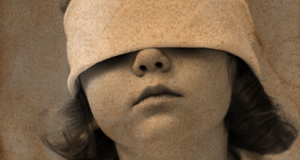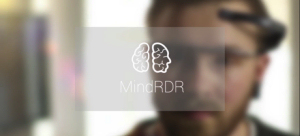First published here on Mariano’s Scifoo14 blog
I’m an Italian magician with a degree in Computer Science. Ioan Petru Couliano helped me to find the red thread between my two worlds, defining Technology as
a democratic Magic that allows everyone to enjoy the extraordinary capabilities of which the magicians used to boast. Electricity, rapid transport, radio and television, the airplane, and the computer have merely carried into effect the promises first formulated by magic. (1)
But the relationship between Magic and Technology may be extremely complex.

Claude Burdin offers 3,000 Francs to anyone who can demonstrate the ability of reading while blindfolded. A 11-years old girl from Montpellier reads a page from a book opened at random. Checking the bandage covering her eyes, the judges discover two little holes. James Randi would label it as a fraud. I prefer to say that it looks like magic, thanks to the technology of the two holes.
 Invite the person next to you to imagine of hiding a coin in the hand. It may be a five-cent or a ten-cent coin. Announce that you are able to read minds. Ask that person to multiply its value by 17. If the reaction is… «Ok!», they are hiding the ten-cent. If the reaction is… «Oh, wait, ehm…», they are hiding the five-cent. Because multiplying by 10 is faster than by 5. A parapsychologist would label it as a dirty trick. I prefer to say that it looks like magic, thanks to a specific knowledge about a mental process. A bit closer to real mind reading.
Invite the person next to you to imagine of hiding a coin in the hand. It may be a five-cent or a ten-cent coin. Announce that you are able to read minds. Ask that person to multiply its value by 17. If the reaction is… «Ok!», they are hiding the ten-cent. If the reaction is… «Oh, wait, ehm…», they are hiding the five-cent. Because multiplying by 10 is faster than by 5. A parapsychologist would label it as a dirty trick. I prefer to say that it looks like magic, thanks to a specific knowledge about a mental process. A bit closer to real mind reading.

A digital studio has developed an app based on a sensor hooked up with Google Glasses. It detects changes in the electrical signals emanating from the brain, letting the user taking photos with the power of the mind. That is still a pretty crude device, but I prefer to say that it looks like magic and it is still closer to real mind reading.
Three stories, with three degrees of “Truth”, all revolving around the fundamental topic of my professional life: making things look like magic by any means necessary.
1. Ioan Petru Couliano, Eros and Magic in the Renaissance, University of Chicago Press, Chicago 1987, p. 104.
BY-NC-SA 4.0 • Attribution-NonCommercial-ShareAlike 4.0 International